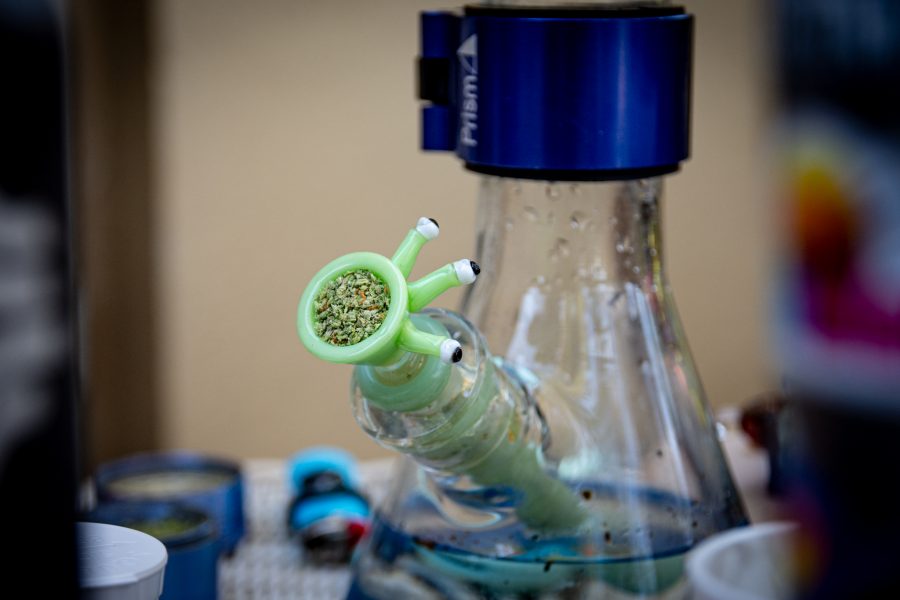Study researches the safety of secondhand bong smoke
Collegian | Tri Duong
Photo illustration of marijuana packed in a bowl that sits in a bong Sept. 7, 2021. (Tri Duong | The Collegian)
April 20, 2022
Everyone knows about the dangers of secondhand tobacco smoke, but what about cannabis? In a recent study published in JAMA Network Open, researchers found smoking cannabis with a bong in a house produced four times more fine particulate matter than cigarette or tobacco hookah smoking.
Researchers at the University of California, Berkeley, studied the amount of fine particulate matter, called PM2.5, in a room where a social bong-smoking session had taken place. The concentration of PM2.5 was measured by an aerosol monitor that sat where a nonsmoker may sit before and after the bong smoking occurred.
“There’s been extensive research looking at the effects of secondhand tobacco smoke,” said S. Katharine Hammond, Ph.D., co-author of the study and professor of environmental health sciences at UC Berkeley. “There’s also been extensive research looking at PM2.5 in the environment. Consistently, we see a wide array of adverse health effects caused by this particulate matter.”
“One thing that’s sure is the lack of research has created a widely accepted misconception that cannabis smoke is better for you than tobacco or cigarette smoke.”
Researchers used a light scattering detector (an aerosol monitor) to measure the concentration of PM2.5 in the smoking environment.
“We had a filter that was weighed very precisely to the level of the dust, on the eyelash of a gnat,” Hammond said. “We drew air through that filter during the smoking session at a known flow rate and weighed the filter once again. By knowing the volume of air that was sampled and the mass that was collected, we could get the air concentration.”
The study is considered observational because conducting research on — or even including — cannabis in the first place is a challenge given its federally illegal status under the Controlled Substances Act.
Given these restrictions, Hammond and co-author Patton Khuu Nguyen had to be mindful of the way they approached the data collection process, so much so that neither researcher could come in contact with anything cannabis-related. The observational nature of the study prevented researchers from administering cannabis to smokers.
“We had no interaction with the smokers during the bong-smoking event,” Nguyen said in an email.
The strains they smoked varied, as Hammond cited multiple studies wherein different brands of cigarettes’ PM.2.5 levels were measured.
“There might be a difference with different strains, but they are not likely to be vastly different results,” Hammond explained.
Until cannabis is federally legalized, it’s unclear when researchers will be able to dive more into the effects of smoking the substance, moreover the effects of secondhand smoke. One thing that’s sure is the lack of research has created a widely accepted misconception that cannabis smoke is better for you than tobacco or cigarette smoke.
“Because you don’t hear about it, some people interpret the lack of information as meaning it’s safe,” Hammond said. “They assume it’s been studied and it’s safe, but the fact is, it just hasn’t been studied.”
Reach Elizabeth White at cannabis@collegian.com or on Twitter @lihhhhhz.





